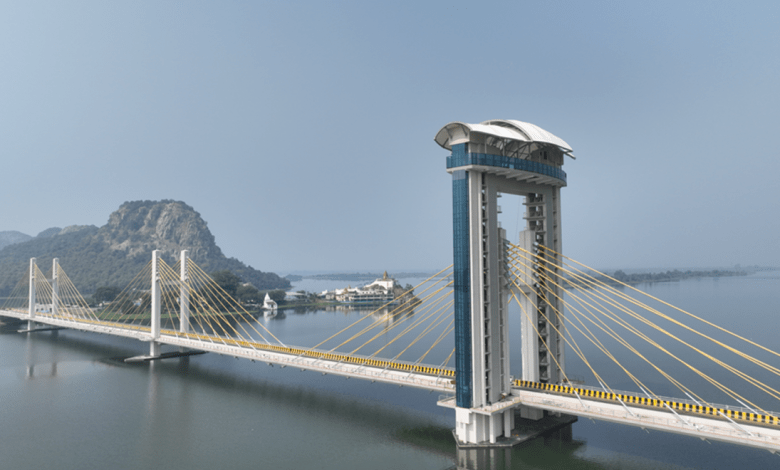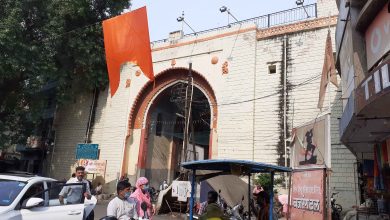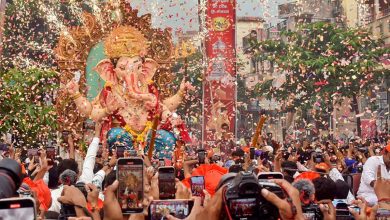Ambhora Sky Gallery’s Soaring Popularity Hampered by Basic Amenity Lapses

A Tourism Marvel with a Troubling Underside
The Ambhora Sky Gallery, built atop the newly-constructed bridge spanning the Wainganga River in Nagpur district, was envisioned as a cornerstone of regional tourism development. Opened in 2024 with much fanfare, the structure has become a visual spectacle, especially due to its breathtaking nighttime illumination. Nestled near the sacred Kalyaneshwar Temple, the gallery attracts devotees, nature lovers, and social media enthusiasts alike. However, its remarkable ascent in popularity is being overshadowed by a glaring oversight: the complete lack of basic visitor amenities.
Ambhora: A Spiritual Hub Meets Tourism Boom
Ambhora has long been cherished as a pilgrimage destination, drawing thousands to the revered Kalyaneshwar Temple. The newly built bridge was a vital upgrade, replacing the precarious dinghy-based crossings previously used by visitors from Bhandara district. With this critical infrastructure in place, the State Government seized the opportunity to further capitalize on the location by launching the Sky Gallery — a glass-floored viewing platform situated midway on the bridge.
But the success of this endeavor has been both a blessing and a burden. With an estimated 5,000 visitors weekly — 80% arriving during weekends — the infrastructure on the ground has failed to keep up with the skyrocketing footfall.
Traffic Woes: A Bridge Choked by Cars and Chaos
The gallery is uniquely positioned in the center of the bridge, with entry points 300 meters away on either end. Visitors can access the gallery via elevators or staircases. However, there is no designated parking area, resulting in vehicles being parked haphazardly along the bridge. This practice effectively reduces the two-lane bridge to a single functional lane, creating a hazardous bottleneck for both incoming and outgoing traffic.
Pedestrians, in the absence of walkways or footpaths, are forced to navigate through moving traffic, endangering their safety. With children, elderly pilgrims, and tourists all crammed into this chaotic environment, the scene regularly descends into confusion and risk.
Ticketing Trouble: A Disaster Waiting to Happen
While the ticket price is a modest Rs. 50 for a 15-minute slot, the location of the ticket counter has drawn serious criticism. Situated directly opposite the lift entrance on the first floor, the ticket counter creates a dangerous congestion point. On weekends and holidays, this area becomes a choke point, with crowds waiting both for the lift and tickets, leading to overcrowding in a confined space.
To make matters worse, there is no weather protection for those standing in line. In a region known for scorching heat and intense monsoons, this lack of shelter leaves visitors vulnerable to heatstroke or sudden panic during rainstorms, with fears of stampede scenarios not far-fetched.
No Basic Amenities: Comforts Missing for Families and Seniors
What further mars the experience is the absence of basic public amenities. There are no public toilets, no drinking water facilities, and no resting zones for elderly or physically challenged visitors. Families with young children face particular challenges, especially during long waits in unshaded queues under the harsh central Indian sun.
The lack of information kiosks, emergency medical support, and security staff only magnifies the risks. While selfies and scenic views flood social media, the real-life experience on the ground is marred by poor visitor management and logistical failures.
Government’s Delayed Response Amid Legal Roadblocks
Officials from the Public Works Department (PWD) have acknowledged the infrastructure shortcomings, confirming that a development tender was floated. However, legal hurdles in the form of an ongoing court case have stalled any progress.
In the meantime, thousands continue to visit, unaware of the risks. With every passing weekend, the gallery’s allure becomes a double-edged sword, drawing more visitors while offering them a less-than-ideal, even dangerous, experience.
Locals Demand Immediate Action
Local residents and regular commuters have begun voicing their concerns. Many complain that what was meant to ease regional travel and boost tourism has instead become a traffic and safety nightmare. Business owners and shopkeepers nearby lament the missed commercial opportunity due to inadequate facilities that could’ve turned the area into a thriving tourist economy.
Their demands are straightforward:
-
Establish dedicated and secure parking facilities
-
Redesign and relocate ticket counters to more open, accessible areas
-
Provide sheltered queue lines and proper signage
-
Install emergency services including first aid and fire safety systems
-
Ensure round-the-clock maintenance and security personnel
A Vision in the Sky Needs Grounded Support
The Ambhora Sky Gallery is a visionary project — one that has the potential to redefine regional tourism. Its aesthetic value, spiritual proximity, and architectural novelty are not in question. But its operational oversight threatens to derail its long-term success.
Without swift action, what was meant to be a landmark of pride could quickly become a case study in mismanagement. If the state government aims to maintain and build upon this momentum, a comprehensive infrastructure overhaul must be treated as a top priority.
From Vision to Responsibility
The Ambhora Sky Gallery stands as both a triumph and a warning. A triumph of design and intent — and a warning of what happens when visitor experience is not matched with planning foresight. Authorities must act now to ensure that the gallery doesn’t fall victim to its own success.
Visitor safety, infrastructure expansion, and amenity upgrades must be fast-tracked if the site is to maintain its charm and reputation. Until then, the Ambhora Sky Gallery remains a place where the heavens meet the river, but the ground reality falls dangerously short.









